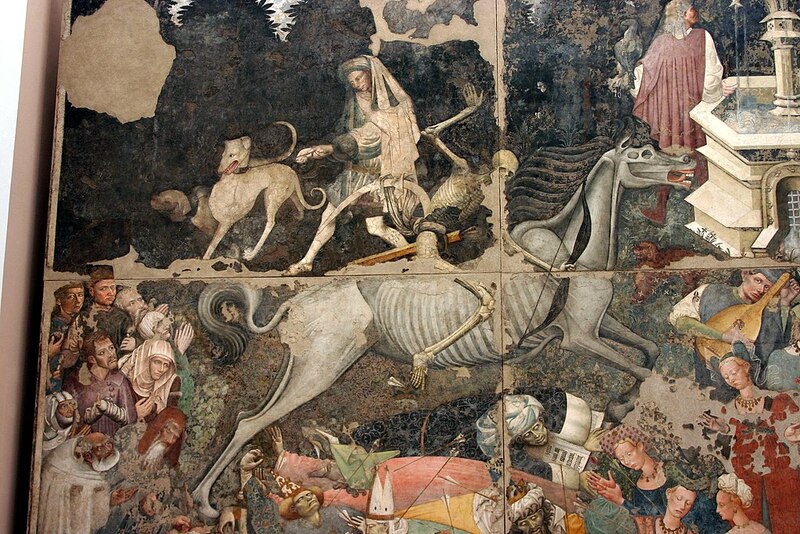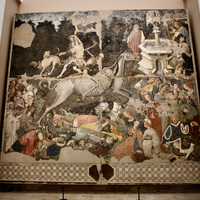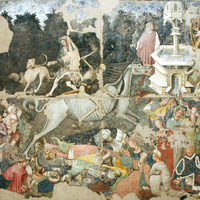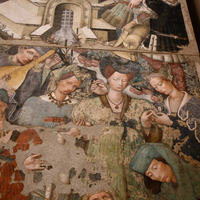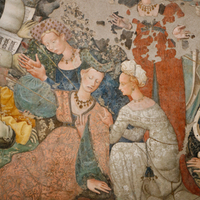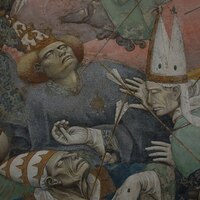Triumph of Death fresco
Type:
Wall paintings
Date:
1440s
Location or Findspot (Modern-Day Country):
Italy
Dimensions:
6 × 6.4 m
Description:
This large fresco was painted by an unknown artist in the 1440s for a hospital in Palermo. After wartime bombing in 1943 damaged the building, the fresco was cut into four pieces and moved to a safer location. It is now displayed in Palermo's Palazzo Abatellis Museum.
In the center of a lush garden, a skeleton riding an emaciated horse represents Death, who shoots arrows at his victims. At the upper left, Death's curved scythe has just snagged a man with hunting dogs. Under the horse are the twisted, dead bodies of laymen and religious figures, including two popes distinguished by tall tiaras. Death seems to have spared the group at the far left, and so far the figures around the fountain are also untouched. At the lower right, some of the well-dressed and heavily bejeweled women and men are just beginning to succumb. Death does not care about the wealth or status of its victims.
No medieval viewer would fail to recognize this chilling allegory of the Black Death, the bubonic plague that had decimated Sicily a century earlier and was followed by repeated outbreaks. In the 1350s, Giovanni Boccaccio (1313–1375) wrote in his Decameron about ten wealthy inhabitants of Florence who fled the plague, and the Sicilian painting may refer to this work because it, too, features seven women and three men at the lower right.
In the center of a lush garden, a skeleton riding an emaciated horse represents Death, who shoots arrows at his victims. At the upper left, Death's curved scythe has just snagged a man with hunting dogs. Under the horse are the twisted, dead bodies of laymen and religious figures, including two popes distinguished by tall tiaras. Death seems to have spared the group at the far left, and so far the figures around the fountain are also untouched. At the lower right, some of the well-dressed and heavily bejeweled women and men are just beginning to succumb. Death does not care about the wealth or status of its victims.
No medieval viewer would fail to recognize this chilling allegory of the Black Death, the bubonic plague that had decimated Sicily a century earlier and was followed by repeated outbreaks. In the 1350s, Giovanni Boccaccio (1313–1375) wrote in his Decameron about ten wealthy inhabitants of Florence who fled the plague, and the Sicilian painting may refer to this work because it, too, features seven women and three men at the lower right.
Relevant Textbook Chapter(s):
10,
11
Image Credits:
Wikimedia Commons; Linda Safran
